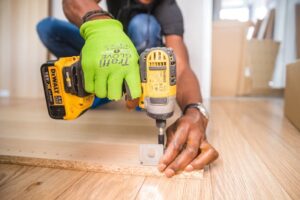
Every first response organization, government agency and survivalist recommends that individuals and families invest time and money in emergency preparedness measures. As a result, people usually have the basic recommended items that they need for an immediate emergency, such as a fall or power outage, stored in their homes. They might even have emergency kits ready for those times that they need to evacuate. Yet, for catastrophic events, far too many people tend to overlook storing certain items that are critical to their well-being and long-term survival. If you haven’t prepared the following items to help you deal with a major emergency, then you’re not prepared well enough:
Cash Stash
People often think that their debit and credit cards are enough to get them through an emergency, but sudden power outages and suspended bank services can make it impossible for them to access their money. Always set aside at home enough cash to cover transportation, food, lodging and medical needs for at least three days. Plenty of experts recommend that individuals save approximately $1,000 for that period of time, but this amount isn’t always enough. If you have a large family, own pets or someone needs special medical assistance, always try to build up a cash stash that’s closer to $2,000 or even higher. Additionally, store the cash in a secure hidden location that you can quickly and easily access before heading out the door.
Essentials Bag
An essentials bag, also known as a “go-bag” or “bug out bag,” is a large duffel bag or backpack that you grab when you flee your home during a major natural or man-made emergency. It contains the regular essentials you need to get by for at least three days, such as cash, identifying documents, clean clothes, a pair of sturdy shoes, hygiene products and medications. Some people use their essentials bags to carry all manner of survival items no matter the type of emergency, including medical supplies, water, food, matches and basic survival tools like a handheld water purifier, can opener, flashlight, crank radio with battery backup and sleeping bag or survival blanket. Whatever type of bag you use, always make certain that it’s not too heavy for you to carry.
Bullet Protection
With rampant gun activity happening across the country, your home isn’t as safe from gun-related violence as it used to be even a few years ago. To protect yourself from stray bullets and direct shots, consider purchasing a vest designed to hold bulletproof inserts. Bulletproof insert plates guarantee that you’re protecting vital organs when shooting starts. This type of protection is also important if you must flee your home during a single shooter, gang conflict or terrorist attack. For protection while in the home, invest in bulletproof window glass, especially if you live in area that has had past problems with gun violence.
Respirator Mask
You never know when an emergency might cause toxic gases or carcinogenic particles to enter the air. These hazards often occur with building fires and explosions, volcanic eruptions and train derailments that involves tankers that contain toxic materials. During these types of emergencies, first responders often evacuate people without providing critical respirator masks. You don’t need to purchase a gas mask: You can find several types of masks that are great for temporary exposure, including reusable respirator and military grade N95 masks. Before you purchase a respirator mask, compare the filtering capacity of different models and pick a product that provides several hours of fine and high concentration, hazardous material filtering.
Of course, these are just a few of the emergency items that you should have stored in your home. It’s also important that you prepare a detailed escape routes plan and map based on different scenarios. For example, if you live near a railroad, dam, nuclear reactor or other man-made structure that could suddenly fail, you need to know the fastest escape routes and alternatives for those times when obstacles might block you from reaching safety. Common obstacles include sudden roadway congestion and falling debris, such as light and electrical poles, trees and boulders.


